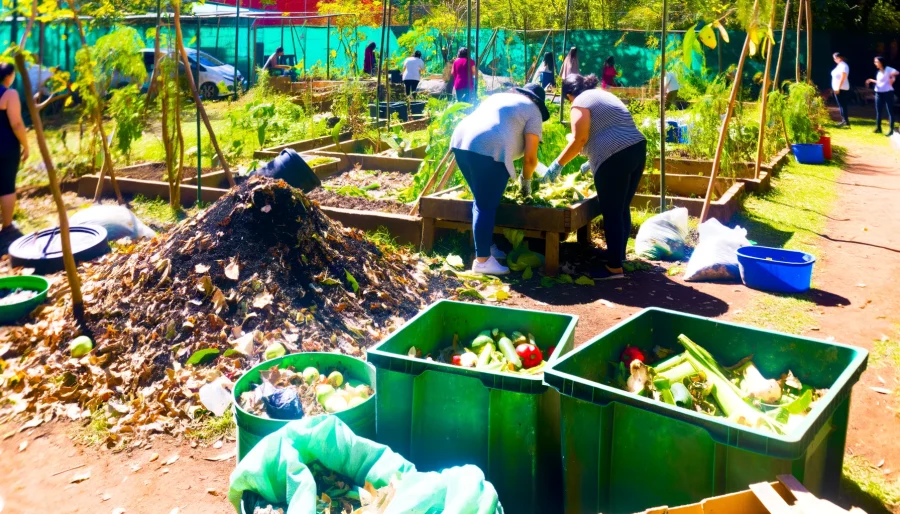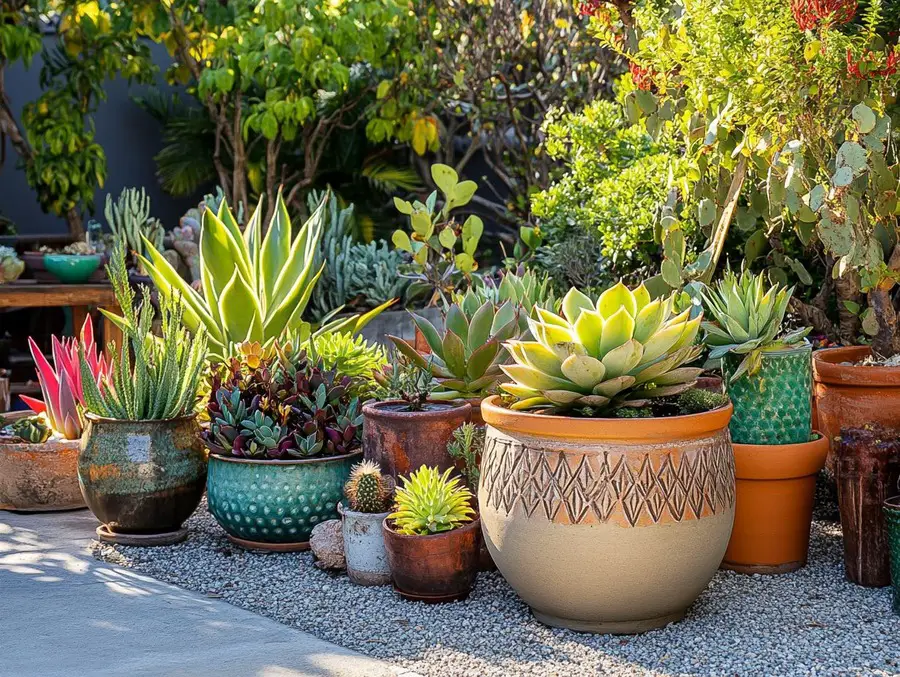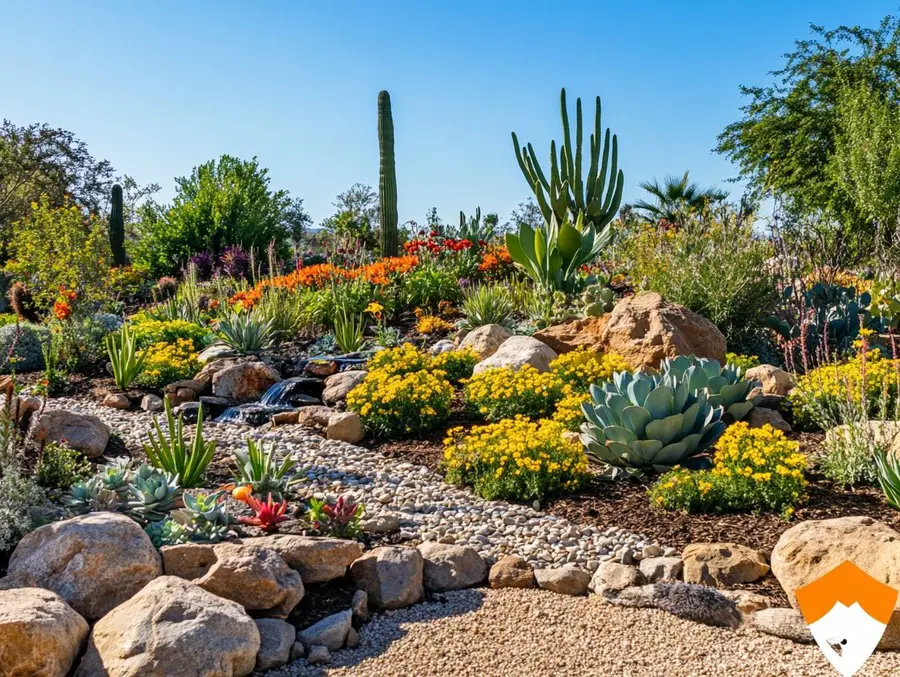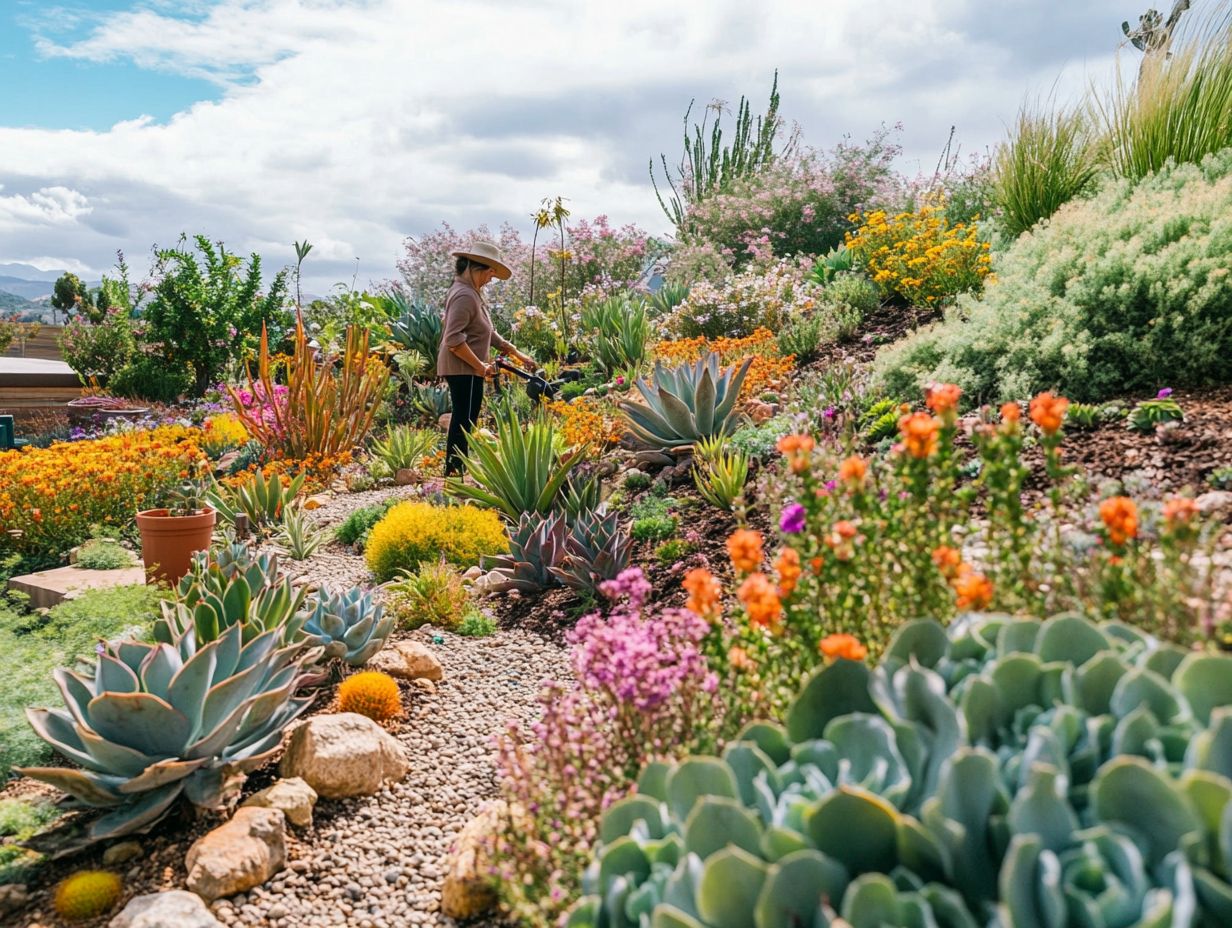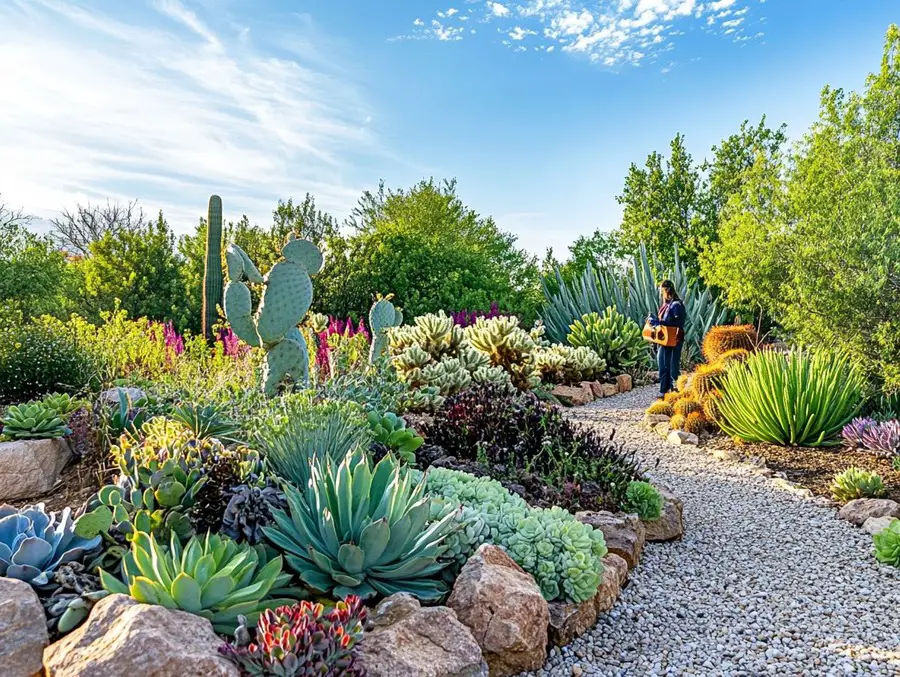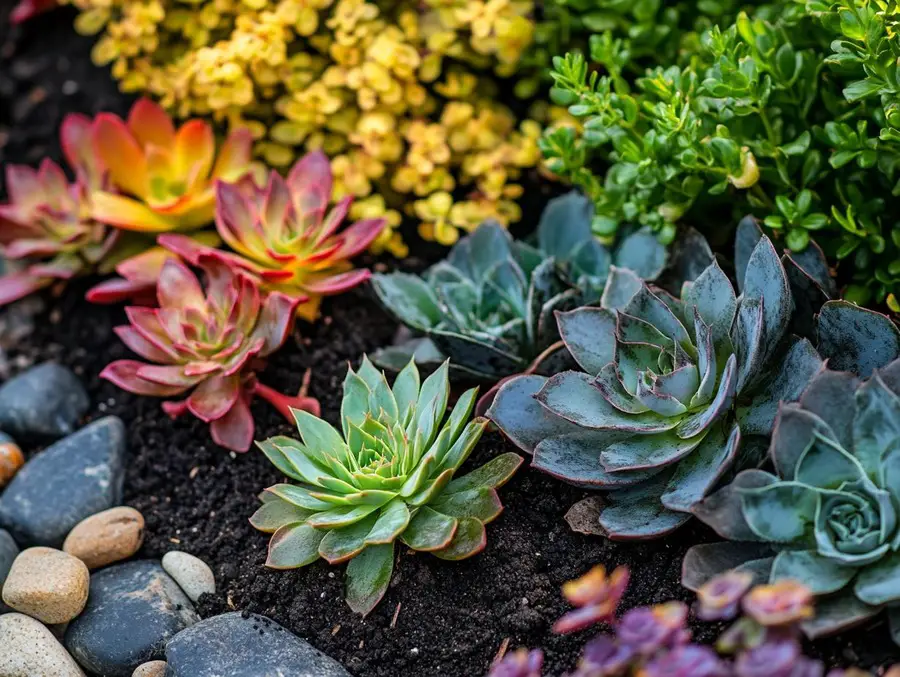We use affiliate links. If you purchase something using one of these links, we may receive compensation or commission.
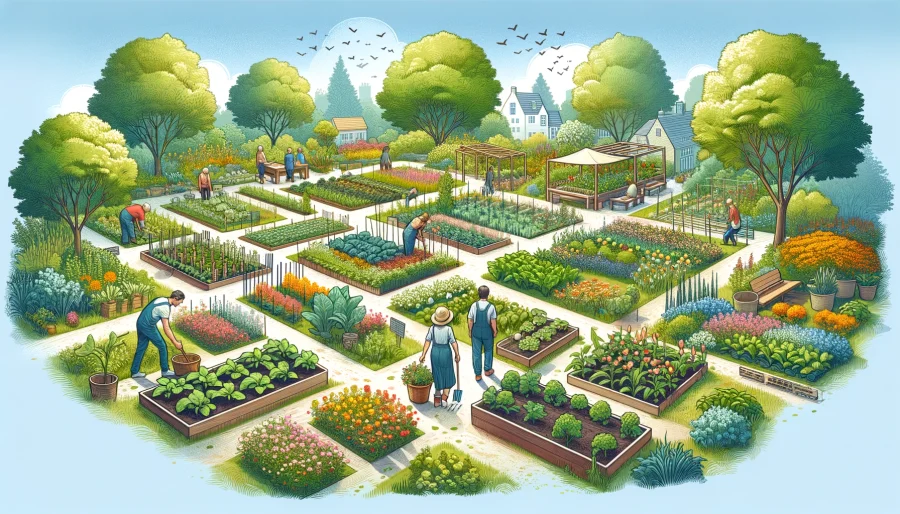
Hey there, garden enthusiasts! If you’re dreaming about starting a community garden but aren’t sure where to plant your roots, choosing the right location is your first big step.
Getting this choice right can really help your garden—and your community—flourish!
Community Garden Location
Key Takeaways
- Choosing a community garden location involves considering accessibility, sun exposure, and local community needs.
- A good location is visible, reachable, and receives enough sunlight to support a variety of plants.
Choosing a Community Garden Location

Well, howdy folks! Diving into the world of community gardening can be a truly rewarding endeavor—it’s all about bringing folks together, beautifying neighborhoods, and, of course, growing fresh produce right in your own backyard (or someone else’s!).
But before you get your hands dirty, the real trick is picking the perfect spot for your green oasis.
Choosing the right location isn’t just a box to check; it’s the cornerstone of ensuring your garden thrives and serves the community as a vibrant hub for years to come.
Let’s dig into why snagging the right spot is so critical and how it can make or break your gardening dreams.
A Brief Overview of Community Gardening
-
What is Community Gardening?
- Community gardening involves a group of people coming together to cultivate plants and vegetables on shared land. These gardens can vary from small herb patches in urban settings to expansive vegetable plots in suburban areas.
-
Benefits of Community Gardening:
- Social Interaction: They foster social connections and create a sense of community among participants.
- Food Production: Provides fresh produce, reducing food insecurity in neighborhoods.
- Educational Opportunities: Acts as a learning platform for gardening skills and environmental stewardship.
- Environmental Impact: Enhances biodiversity, improves air quality, and beautifies urban landscapes.
Importance of Choosing the Right Location
-
Accessibility Matters:
- The garden should be easily accessible to all participants. Consider proximity to public transportation and the availability of parking.
-
Sunlight and Soil:
- Evaluate the sunlight exposure; most vegetables need about 6-8 hours of direct sunlight daily.
- Conduct a soil test to assess its quality and suitability for the types of plants you intend to grow.
-
Water Source Accessibility:
- Having a nearby water source is crucial for maintaining a healthy garden, especially during the warmer months.
-
Community Engagement:
- Choose a location that is visible and welcoming to encourage community involvement and deter vandalism.
Selecting the ideal location for a community garden goes beyond just finding a large enough space.
It’s about ensuring the garden is accessible, suitable for gardening, and capable of fostering community engagement.
This careful choice sets the foundation for a successful and sustainable community project.
1. Understanding Community Garden Basics
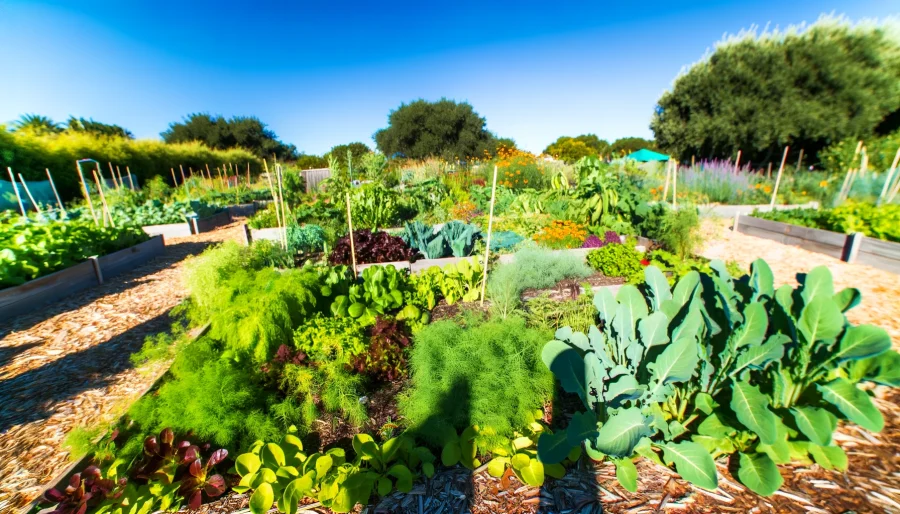
What is a Community Garden?
A community garden is a piece of land cultivated by a group of people that can take various forms depending on its location and the goals of its gardeners.
Whether nestled in the hustle of urban centers, spread out in suburban locales, or dotting rural areas, these gardens serve as communal spots for growing not just plants, but also relationships and a sense of ownership among participants.
Types of Community Gardens:
- Urban Gardens: Maximizing small spaces in city environments, often on rooftops or abandoned lots.
- Suburban Gardens: Typically larger plots on shared community land.
- Shared Plots: Individuals or families manage specific sections within a larger community space.
Benefits of Community Gardening:
- Social Connections: Gardens foster a strong sense of community and belonging, offering a place for people to meet, work together, and build friendships.
- Environmental Impact: They contribute positively to the environment by increasing green space, reducing neighborhood waste through composting, and decreasing air pollution.
- Health Benefits: Gardening is not only therapeutic but also encourages consumption of fresh, nutritious produce.
- Educational Opportunities: Many gardens serve as educational grounds where both children and adults can learn about gardening, sustainability, and local flora and fauna.
Community gardens are more than just plots of land; they are dynamic spaces that promote healthy lifestyles, strengthen community bonds, and provide educational opportunities while beautifying neighborhoods.
Choosing to start a garden can significantly impact the well-being of its participants and the health of the local environment.
2. Factors to Consider When Choosing a Location

Accessibility and Visibility
Choosing a spot that’s easy to get to isn’t just about convenience; it’s about ensuring everyone who wants to can participate.
Look for a location that’s close enough for most community members to walk or bike to, which encourages regular visits and upkeep.
Also, a visible garden can become a local landmark that draws in community support and deters potential vandalism.
Environmental Conditions
- Sunlight Exposure: Most vegetables and flowers thrive under full sun, so aim for a location that gets plenty of direct sunlight daily—about 6-8 hours.
- Soil Quality: Healthy plants start with healthy soil. Test the soil for nutrients and contaminants to see if it’s suitable for planting or needs improvement.
- Water Availability: Easy access to water is crucial for maintaining a garden, especially during dry spells. Consider nearby water sources or the feasibility of installing a rainwater harvesting system to ensure your garden stays hydrated.
Safety and Regulations
When scouting locations, think about the safety of the area. Is it well-lit and secure?
Also, check out local zoning laws to make sure your garden complies with municipal regulations.
This can prevent legal issues and ensure that your garden is a welcome part of the community.
These considerations are key to selecting a spot that not only grows lush plants but also fosters a thriving community gathering space.
3. Garden Design and Layout
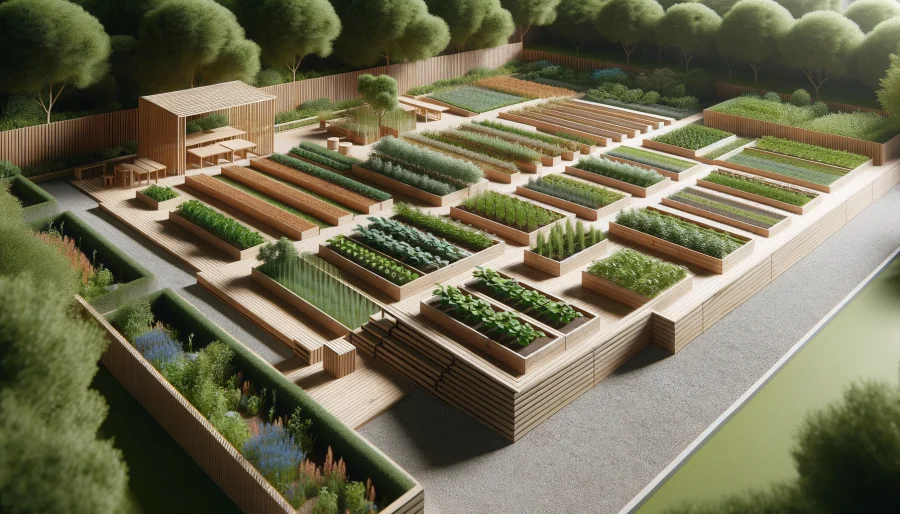
Planning for Various Garden Types
When planning your community garden, think about what types of plants you want to grow.
Each type of garden—whether it’s for vegetables, flowers, or herbs—has its own space requirements and environmental needs.
Vegetables might need rows that accommodate growth and harvesting, flowers might thrive in more aesthetic arrangements, and herbs might do best in smaller, more contained spaces.
Planning according to the type of garden can maximize both the health of the plants and the ease of maintenance for gardeners.
Incorporating Raised Beds, Communal Areas, and Pathways
- Raised Beds: These are fantastic for improving drainage, extending the growing season, and making gardening accessible to more people, including those with limited mobility.
- Communal Areas: Consider adding picnic tables or benches where people can gather, rest, or hold meetings. These spaces help foster a sense of community and make the garden a more inviting place.
- Pathways: Ensure that pathways are wide enough for easy access throughout the garden. They should allow movement for wheelbarrows, strollers, and individuals using mobility aids. Pathways also help to organize the garden and prevent soil compaction around the plant beds.
Designing your garden with thoughtful consideration of different plant types and communal needs not only enhances the space’s functionality but also encourages the community’s ongoing participation and enjoyment.
4. Community Engagement and Management
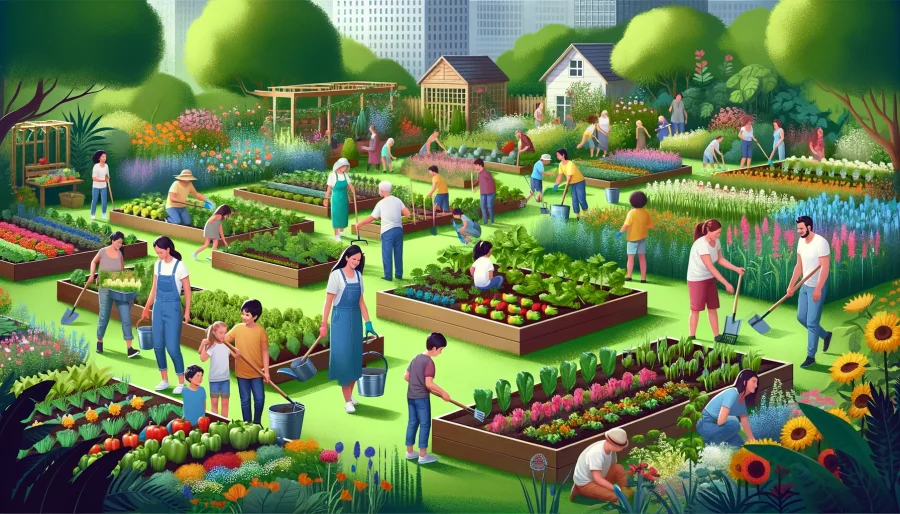
Involving the Community in Planning and Decision-Making
A community garden is more than just a place to grow plants—it’s a collaborative project that thrives on the input and energy of its members.
Inviting community members to participate in the planning and decision-making processes ensures that the garden meets the diverse needs and desires of those it serves.
This involvement can range from deciding what types of plants to grow, to designing the layout of the garden, to setting rules and guidelines.
Engaging the community from the outset fosters a sense of ownership and commitment, which is crucial for the garden’s long-term success.
Organizing Community Events and Workshops
To keep engagement high and provide continuous learning opportunities, consider organizing regular events and workshops.
These can include gardening tutorials, cooking demonstrations using produce from the garden, or environmental education sessions.
Such activities not only enhance gardening skills but also strengthen community ties.
Events are also a great way to attract new members and showcase the garden’s impact to potential sponsors or supporters.
By focusing on active community involvement and educational opportunities, you create a dynamic environment where both plants and community relationships can flourish.
This approach not only makes the garden a hub of activity but also ensures it remains a cherished part of the neighborhood.
5. Sustainability Practices

Emphasis on Organic Gardening and Pest Control
Opting for organic gardening practices not only nurtures healthier plants but also protects the environment and garden visitors.
This approach avoids synthetic chemicals, using natural methods like companion planting to deter pests, and organic pesticides when necessary.
Educating garden members on identifying and managing pests organically can help maintain a balanced ecosystem within the garden.
Implement Sustainable Practices Like Composting and Using Native Plants
Composting is a cornerstone of sustainable gardening.
By turning kitchen scraps and garden waste into rich compost, you not only reduce waste but also enrich the soil naturally.
Furthermore, incorporating native plants into the garden design supports local wildlife, including pollinators, and requires less maintenance and water than non-native species.
These practices contribute to a more sustainable and self-sufficient garden that aligns with ecological principles.
These sustainability practices are essential for creating an environmentally friendly community garden that respects the local ecosystem and provides a robust, natural space for the community to enjoy.
6. Legal and Financial Considerations
Securing Funding and Resources
Starting a community garden involves some upfront costs, such as acquiring land, purchasing seeds and equipment, and setting up water systems.
To cover these expenses, it’s important to explore various funding sources.
Community grants, local business sponsorships, and fundraising events are common ways to secure the necessary funds.
Additionally, consider resource-sharing initiatives, like tool lending libraries, which can reduce costs and foster a sense of community ownership.
Understanding Potential Costs
Budgeting is crucial in the early stages of planning a community garden.
Typical expenses include soil, plants, tools, and ongoing maintenance costs.
By anticipating these costs, you can plan fundraisers and allocate resources more effectively, ensuring the garden’s sustainability.
Legal Considerations When Setting Up a Community Garden
Legal factors can significantly impact the establishment of a community garden.
It’s essential to understand local zoning laws, which dictate where and what you can plant.
Additionally, obtaining the necessary permits and insurance can protect the garden and its organizers from liability.
Engaging with local authorities early in the planning process can help navigate these legal complexities smoothly.
Addressing these financial and legal considerations will help lay a strong foundation for a successful community garden, ensuring it is both compliant with local regulations and financially sustainable.
7. Addressing Common Challenges
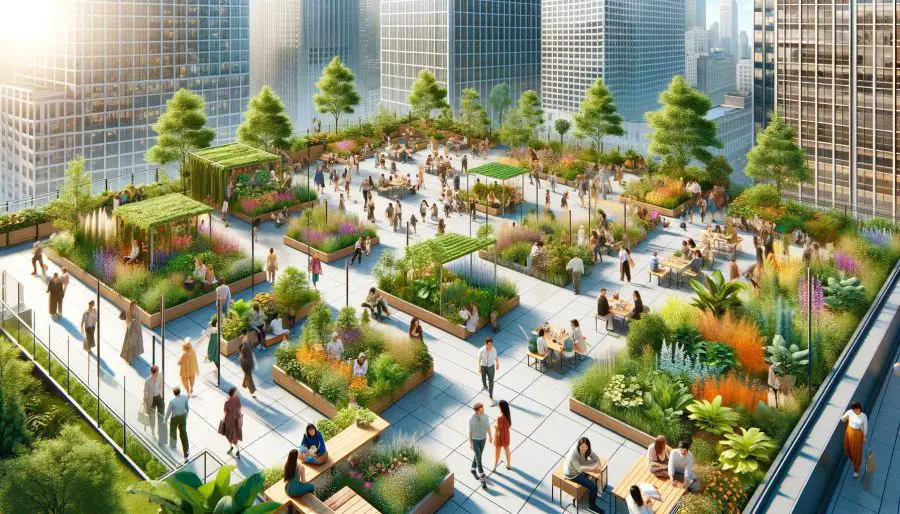
Dealing with Pests, Weather, and Other Common Gardening Challenges
Gardening isn’t always a walk in the park—pests, unpredictable weather, and plant diseases can all throw a wrench in your gardening plans.
To combat these challenges, implement integrated pest management practices that focus on prevention, use resistant plant varieties, and employ natural predators or barriers.
For weather issues, such as frost or intense heat, use protective covers or shading to safeguard your plants.
Regular workshops can help community members learn these techniques and respond effectively to common gardening problems.
Conflict Resolution and Setting Clear Rules and Guidelines
A community garden is a collective effort, which means conflicts might arise.
Establishing clear rules and guidelines from the start is crucial.
These rules should cover everything from plot usage, watering schedules, and how to handle harvests to ensure fair access and use for everyone.
Additionally, setting up a conflict resolution protocol can help manage disputes amicably.
Regular meetings can provide a forum for discussions and help maintain open communication among garden members.
By proactively addressing these common challenges through education, clear guidelines, and effective gardening practices, your community garden can remain a healthy and harmonious space for all participants.
Conclusion Choosing a Community Garden Location
Well, folks, we’ve covered a lot of ground today, from selecting the perfect spot for our community garden to keeping it thriving through thick and thin.
Here’s a quick recap and a little nudge to get your hands dirty in the best possible way!
Key Takeaways:
- Location is Key: Choose a spot that’s accessible, has good sunlight, and where water is available. This sets the stage for a thriving garden.
- Community Involvement: Engage the local community from the start. Their input and participation are crucial for both the garden’s success and sustainability.
- Design Smartly: Utilize raised beds, create communal areas, and ensure the garden is well-organized with clear pathways.
- Stay Organic: Focus on sustainable practices like organic pest control, composting, and using native plants to minimize environmental impact.
- Understand the Legalities: Be aware of zoning laws and secure the necessary permissions to avoid future hiccups.
- Prepare for Challenges: Have strategies in place for dealing with pests and weather, and set clear guidelines to manage conflicts.
Call to Action:
Now that you’re armed with all the know-how, why not take that first step?
Whether you’re a seasoned gardener or a curious newbie, your local community garden offers a patch of potential just waiting to be nurtured.
Gather your neighbors, friends, or family and start planning today.
Together, we can grow a lush oasis that strengthens our community, feeds our bodies, and uplifts our spirits.
Let’s dig in and keep our community green, folks!
Read more: Community Gardens Benefits: How To Start a Community Garden
Happy gardening, and don’t forget to enjoy the fruits—and veggies—of your labor!
Choosing a Community Garden Location FAQs
Got questions about starting or participating in a community garden? You’re in the right place!
Here are some common queries we’ve gathered, along with straightforward answers to help you get growing!
Q. Where is the best place to start a community garden?
A. The best place for a community garden is a location that’s accessible to all participants, has ample sunlight (about 6-8 hours a day), good soil, and a nearby water source.
It should also be a safe, visible area to encourage community involvement and deter vandalism.
Q. How to choose a location for your garden?
A. When choosing a location for your garden, consider factors like sunlight exposure, soil quality, water access, and proximity to community members.
It’s also wise to think about safety, visibility, and any local zoning laws that might affect garden placement.
Q. What is the best location for urban gardening?
A. The best locations for urban gardening are often underutilized spaces such as rooftops, abandoned lots, or even large containers on balconies.
Ensure the area gets sufficient sunlight and has access to water.
Q. What is a good size for a community garden?
A. A good size for a community garden depends on the available space and the number of participants.
Each gardener typically needs at least 25-50 square feet to grow a variety of plants.
Larger gardens allow for more extensive planting and communal areas.
Q. What are the cons of a community garden?
A. Some cons include the potential for conflicts among gardeners, the ongoing commitment required to maintain the garden, and challenges such as pests and theft.
However, clear rules and active management can mitigate many of these issues.
Q. What makes a community garden successful?
A. A successful community garden thrives on active community engagement, clear organization and rules, regular maintenance, and educational opportunities for gardeners.
A strong focus on sustainability and inclusivity also contributes significantly to its success.
Q. How to decide where to put a garden?
A. To decide where to put a garden, evaluate the space for environmental factors like sunlight and wind patterns.
Ensure it’s accessible and safe for all gardeners, and check that it complies with local zoning regulations. Community input is also crucial in this decision.
Q. How do I plan my garden location?
A. Start by assessing potential sites for environmental suitability and accessibility.
Engage with the community to gather input and support.
Then, conduct soil tests, check water availability, and ensure the site meets all local legal requirements.
Q. Should a vegetable garden be in full sun?
A. Yes, most vegetable plants thrive in full sun, which means they require at least 6-8 hours of direct sunlight each day.
Some leafy vegetables can tolerate partial shade but still perform best with good sunlight.
These FAQs are designed to guide you through the basics of setting up and running a community garden, making it easier to start your gardening adventure. Happy gardening!
Resource Section: Dive Deeper into Community Gardening
Interested in expanding your knowledge about community gardening?
Whether you’re just getting started or looking to enhance your existing garden, these resources can provide you with a wealth of information and guidance.
Check out the links below to learn more about creating and sustaining successful community gardens.
American Community Gardening Association (ACGA)
An essential resource for anyone involved in community gardening. ACGA offers a variety of resources, including best practices, research, and community garden stories to inspire and educate.
Visit: American Community Gardening Association
National Gardening Association (NGA)
Offers detailed guides, plant databases, and educational materials that can help both novice and experienced gardeners. Their community gardening section provides practical advice on starting and maintaining a garden.
Visit: National Gardening Association
Local Harvest
A great tool for finding community gardens near you. Local Harvest also includes information on local farms, farmers’ markets, and other sources of sustainably grown food, which can serve as inspiration for your community garden.
Visit: Local Harvest
Grow It Yourself (GIY)
An international community of gardeners dedicated to helping people grow their own food. GIY offers advice, how-tos, and community support to get your garden growing.
Visit: Grow It Yourself
These resources can be your go-to guides for understanding the intricacies of community gardening, finding support, and connecting with other garden enthusiasts.
Dive in and start cultivating not just plants, but also connections and a greener community!
Related Content
Visit my Amazon Influencer Page for videos and gardening products Grow Your Own Garden

